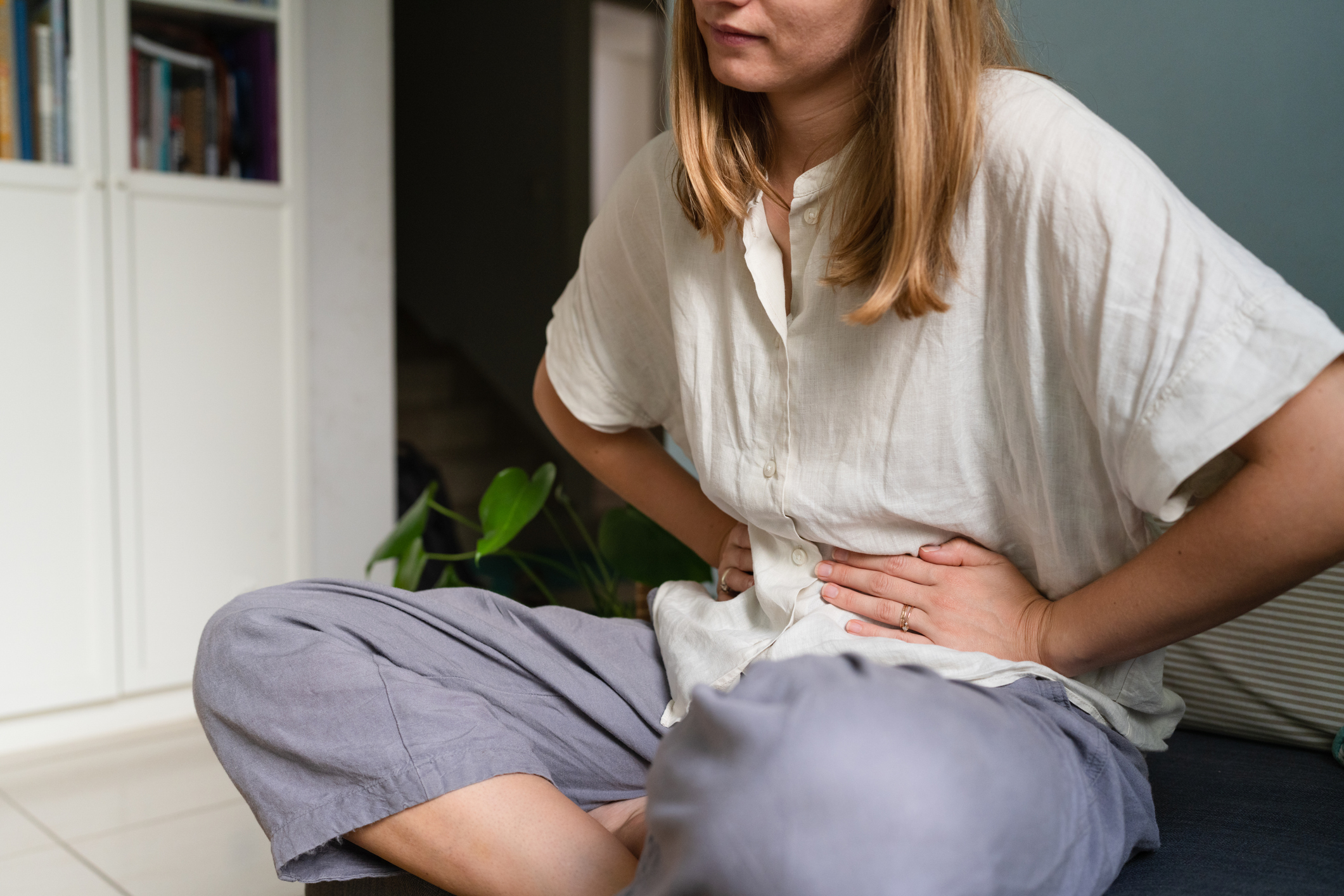You’ve just finished a bout of diarrhea…so now why do you have constipation? The simplest answer is that taking an antidiarrheal medication to stop loose stools actually can lead to constipation. The drug is basically shutting down the gastrointestinal (GI) system, and a “reset” can take a few days.
But there are many other situations to be aware of, says gastroenterologist Brooks D. Cash, MD. Here’s what you need to know and when to see a health-care provider, especially if you’re caught on a laxative–anti-diarrheal roller coaster.
Constipation-diarrhea cycle
Alternating, or “seesawing,” constipation and diarrhea is a common problem. You might have constipation for three, four or five days, with no urge or ability to have a bowel movement. But then this can be followed by a day or two of diarrhea…and then a return of constipation. This is referred to as predominant constipation with overflow diarrhea. Though everyone is different, for many the main complaint is the diarrhea because it interferes with life more rapidly and unexpectedly than constipation. It is unpredictable and can occur at the most inopportune time. Constipation is associated with bloating, abdominal pain and distension, but you typically don’t fear having an accident.
What causes it: After diarrhea from either a viral or bacterial gastrointestinal infection, you may experience changes in your GI motility—the movement of food and waste through your digestive tract—because the gut’s microbial environment has been disrupted by a proliferation of methane-producing microbes. Methane has been shown to slow gut motility, leading to constipation. A gastrointestinal infection also can upset the balance of enzymes needed to digest sugars and starches, and that, too, can result in temporary constipation.
There are several conditions that can lead to predominant constipation with overflow diarrhea…
IBS
Irritable bowel syndrome—a syndrome, or collection, of symptoms including abdominal pain—is associated with a change in the form and/or frequency of stool during periods of abnormal defecation. IBS symptoms can be very intermittent—you may have normal bowel movements for three weeks in a row without any abdominal pain…then in week four, you have three or four days of abdominal pain and constipation and/or diarrhea.
There are three main IBS subtypes…
- IBS with diarrhea (IBS-D)—diarrhea at least 25% of the time and constipation less than 25% of the time.
- IBS with constipation (IBS-C)—constipation at least 25% of the time and diarrhea less than 25% of the time.
- IBS-mixed (IBS-M)—both diarrhea and constipation at least 25% of the time.
IBS is a moving target, and because it’s so variable, treatment needs to be tailored to each person.
Diseases affecting the GI system
Inflammatory bowel diseases, including Crohn’s disease and ulcerative colitis, can cause GI alterations leading to diarrhea and occasionally constipation. So can celiac disease and bacterial overgrowth (dysbiosis). A variety of rheumatologic diseases, such as lupus, rheumatoid, arthritis and scleroderma, as well as endocrine disorders, including thyroid abnormalities, can include diarrhea and constipation among their symptoms. Treating the primary disease should help with constipation and diarrhea.
Fecal impaction
Stool can get trapped, or impacted, in the bowel, often from chronic constipation. That can lead to overflow diarrhea. When this occurs, it is typically in the distal, or lower, part of the colon (large intestine) where the stool is more formed and the colon more tortuous. Peristalsis—the normal involuntary muscle contractions involved in moving waste through the GI tract and defecating—can force stool above the impaction to move around it to exit the body. Treatments to remove the impaction can include manual disimpaction or laxatives and enema therapies. Fecal impaction is typically diagnosed by a health-care provider based on symptoms that may include abdominal pain, difficult defecation, bloating and/or abdominal distention, and imaging with x-rays.
Pelvic floor dysfunction
This is an abnormality with the coordination of the muscles of the pelvic floor that facilitate defecation. About 20% to 30% of people with chronic constipation actually have some degree of pelvic floor dysfunction contributing to the constipation. This condition often doesn’t respond to medication, but rather is best treated with physical therapy from a specially trained physical therapist to restore pelvic floor function, among other approaches.
Medication side effects
Antidiarrheals and other GI medications aren’t the only drugs that can lead to constipation. Medicines for high blood pressure, pain (especially opioids) and non-steroidal anti-inflammatories (NSAIDs), including aspirin, ibuprofen and naproxen, have been associated with constipation and bowel habit changes. Treatment for medication-induced constipation can lead to diarrhea as a side effect, and vice versa. Best advice: Ask your doctor if any of your medications could be causing your bowel symptoms.
When to Get Medical Help
If you’re cycling between diarrhea and constipation, start by talking to your primary health-care provider about your symptoms. You may be able to manage constipation with lifestyle modifications such as increasing your activity level and taking a soluble fiber like psyllium. Taking over-the-counter laxatives, either intermittently or even on a regular basis, may help when it is done under your doctor’s direction.
If this fails to control symptoms…if you have an underlying medical condition that can be associated with constipation…or if you experience any “alarm” symptoms such as blood in the stool, unintentional weight loss, severe abdominal pain or have a family history of colon cancer, see a GI specialist for an evaluation. He/she can identify or rule out gastrointestinal disease and devise a treatment plan to minimize symptom fluctuation.
One thing to share with your doctor: A daily stool diary that details what each stool looks like, how difficult it was to pass, how often you’re having bowel movements and how often you feel completely evacuated after a bowel movement. This allows the specialist to assess what your bowel habits are like over time and in relation to your other symptoms.
Regardless of the cause, the goal is to improve your quality of life and give you predictability with your symptoms. They may not be completely eradicated, but it should be possible to minimize the fluctuation and impact.


